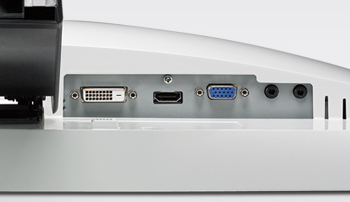I am a "diagnosed diabetic" for almost 10 years now and have used many blood glucose meters and a couple of blood pressure meters to keep track of my vitals to help manage my health. The first time i went to see the doctor after being diagnosed with diabetes with a colorful chart, the doctor was surprised and said I was the first of his patients to do this. That was the honeymoon phase right after being diagnosed when I was serious about controlling it. It has been an up an down battle since then. What i had to do was take the measurements on the blood glucose (here after BG) and blood pressure (here after BP) meters and then once a week would enter into an excel file and then plot it to see the high lows and the average. This was helpful in my follow up discussions with the doctor. did that the first 2-3 visits and then stopped as i kept forgetting to input them into excel. There were some meters out there that had an audio out jack that allowed you to connect to a Windows PC the meter and download the data using special software.
Being a techie, i could not believe this. Seems hard to believe we didn't have something easier. But looking back I realize this was 2003-2004 I am talking about (seems like eons ago before the smartphone era with cool apps, doesn't it?).
Back in early 2012 i found an app aptly named "BloodSugar" by healthycloud that i have been using to input my readings. This app is cool and allows you to see your history as a table and as a chart that i have been showing to my doctor during recent visits. Also found a BP app called "BPMonitor" by Taconicys that is similar with tables and charts to see historical data.


But the funny part is that even after so many years of smart phones being around, the big bad pharma companies have not come out with meters that either talk to a phone over Bluetooth or NFC or a meter that just attaches to the smartphone as a dock! Well one small company has. This BG meter that connects to the iPhone is called iBGStar. I can't wait to try it out. I just found out about it. There is also a "MyGlucohealth" BG meter with Bluetooth that is out there but there are concerns about the accuracy of it's readings.
Hoping that the more popular brands like AccuChek (Roche), Bayer, Freestyle (Abbott) would not have bluetooth enabled meters. Roche has a bluetooth controlled insulin delivery tool but not a meter. Go figure.
I prefer the Bluetooth enabled meters in place of the dock-able ones as the connectors in every phone seems to be different.
Please share if you are aware of meters available in the market that are up to par for automated tracking!!!
Cheers to everyone's good health and staying healthy
-Ram
Being a techie, i could not believe this. Seems hard to believe we didn't have something easier. But looking back I realize this was 2003-2004 I am talking about (seems like eons ago before the smartphone era with cool apps, doesn't it?).
Back in early 2012 i found an app aptly named "BloodSugar" by healthycloud that i have been using to input my readings. This app is cool and allows you to see your history as a table and as a chart that i have been showing to my doctor during recent visits. Also found a BP app called "BPMonitor" by Taconicys that is similar with tables and charts to see historical data.


But the funny part is that even after so many years of smart phones being around, the big bad pharma companies have not come out with meters that either talk to a phone over Bluetooth or NFC or a meter that just attaches to the smartphone as a dock! Well one small company has. This BG meter that connects to the iPhone is called iBGStar. I can't wait to try it out. I just found out about it. There is also a "MyGlucohealth" BG meter with Bluetooth that is out there but there are concerns about the accuracy of it's readings.
Hoping that the more popular brands like AccuChek (Roche), Bayer, Freestyle (Abbott) would not have bluetooth enabled meters. Roche has a bluetooth controlled insulin delivery tool but not a meter. Go figure.
I prefer the Bluetooth enabled meters in place of the dock-able ones as the connectors in every phone seems to be different.
Please share if you are aware of meters available in the market that are up to par for automated tracking!!!
Cheers to everyone's good health and staying healthy
-Ram









